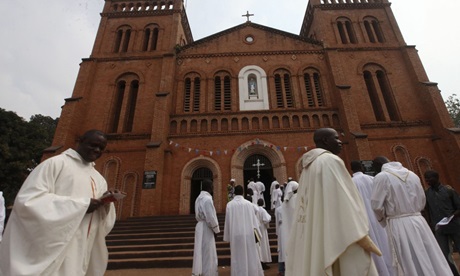A new report indicates that Spain leads the world in terms of the number of Catholic missionaries serving abroad, with almost 10,000 Spanish priests, nuns, and brothers working in Latin America and other corners of the world.
It’s also in second place in terms of financial support for missionary activity.
Such a commitment is obviously to the honor of the Spanish church, which over the centuries has been among the great motor forces of Catholic evangelisation.
The bad news, however, is that the average age of those Spanish missionaries is 75, meaning their ranks are in steady decline as current personnel age and aren’t being replaced by younger clergy and religious.
Indeed, if you visit any of the traditional centers of Spanish Catholicism these days, you’re likely to find what most observers now call the “reverse mission.”
Reverse mission
Places which not so long ago were exporting missionaries are now net importers, increasingly reliant on personnel from former mission territories to keep their own pastoral operations afloat.
Go to a typical parish in, say, Toledo, or Granada, or Burgos, and the odds are good that the priest who says Mass will hail from Peru, or Colombia, or Mexico, or anyplace other than the country in which he’s actually working.
It’s hardly just Spain.
On June 6, Pope Francis made a surprise visit to St. Bridget of Sweden Church on the northwestern corner of Rome, located in the city’s Palmarola neighborhood, a classic working-class district made up almost entirely of native Italians.
Yet the pastor and associate pastor who staff the parish are Congolese and Cameroonian, respectively, both missionary priests who belong to the Spiritan Fathers, formally known as the Congregation of the Holy Spirit.
Like Spain, Italy was once among the great providers of missionaries around the world.
Today, however, the situation is reversed: According to data from the Italian bishops’ conference, for every one Italian priest serving abroad, there are five foreign-born priests with assignments in Italy.
The total number of foreign priests in Italy today comes to 2,812, which is almost 10% of all the Catholic priests in the country.
In the small Roman parish where my wife and I worship, our associate pastor, Father Don Alberto, is from Benin, and I can testify from personal experience that without him, it’s not at all clear how the community would keep going.
The same pattern holds in the United States, of course.
According to the Center for Applied Research in the Apostolate at Georgetown University, as many as 38 percent of priests in recent U.S. ordination classes were born outside the U.S.
Even in middle American venues such as the Archdiocese of Oklahoma City, nearly 25 percent of the presbyterate comes from India, Kenya, and several Latin American nations.
At one level, this is a great success story:
For centuries missionaries from the cradle of Christendom in the West spread the faith around the world, and today the churches they planted are returning the favor, offering the sometimes aging and moribund churches of the West a new lease on life.
On the other hand, from a strategic planning point of view, this trend of redistributing clergy from the global south to the north is not without controversy.
In fact, there’s a powerful case to be made that it’s in fact an exploitative pattern, in which affluent churches in the West are poaching clergy from financially strapped churches in the developing world, without regard to where those personnel are most needed.
In Europe, for instance, there’s currently one priest for every 1,700 Catholics, but in Africa that ratio is 1 to 5,700, meaning the “priest shortage” in Africa is roughly five times worse.
That contradicts impressions of Africa as booming with vocations, and it’s true that seminaries across the continent tend to be full.
Yet when a church is growing, as Africa has throughout the latter half of the 20th century and the early part of the 21st, disparities between faithful and clergy widen, because frankly Catholicism can baptize people much more rapidly than it can ordain them.
In other words, there is no “surplus” of priests in the developing world, and so every one of them who serves in a setting such as Spain, Italy, or the United States, is one fewer priest available to minister to congregations back home.
Two decades ago, Cardinal John Onaiyekan of Nigeria warned of where all this might be heading. Read more
- John L. Allen Jr. is the editor of Crux, specializing in coverage of the Vatican and the Catholic Church.
